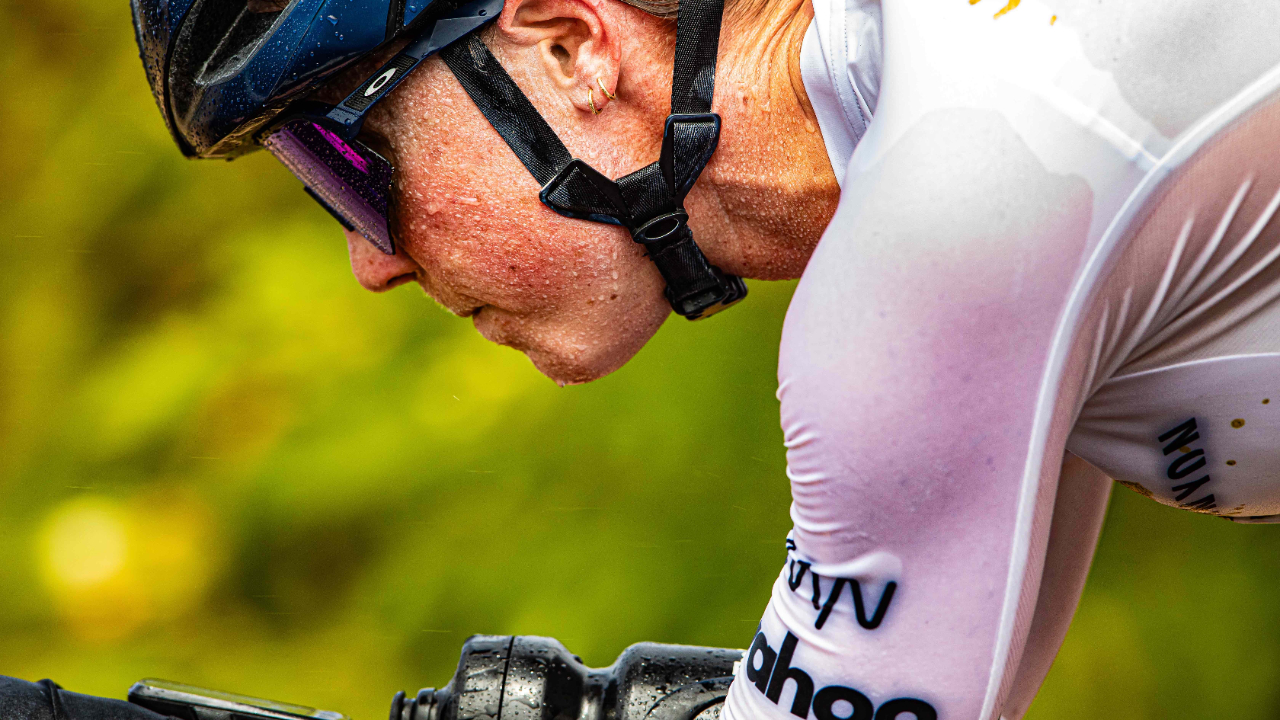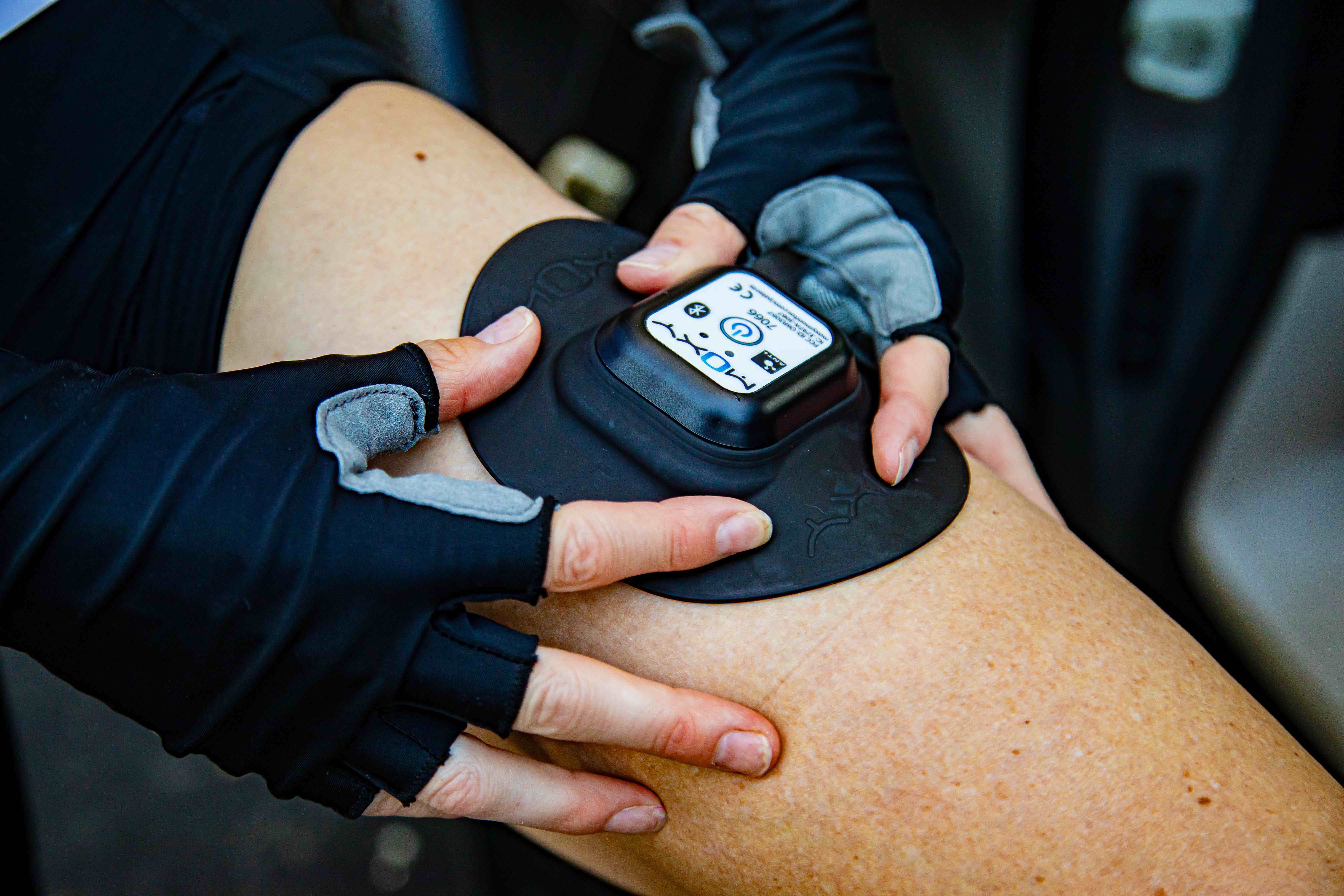Unpacking 'Within-Session Intensity Regulation': Defining the Concept

📸 @rookproductionsmedia
In recent blogs and newsletters, I have extensively discussed 'within-session intensity regulation.' I believe that proper within-session intensity regulation is one of the most critical components of the training process. It's a topic I spend a lot of time contemplating, planning for, and researching.
But what exactly do I mean by 'within-session intensity regulation'? In this blog, I'll attempt to clarify this concept.
Context
Imagine you're training for an Ironman. You're currently in the midst of a four-week Specific Strength training block, focusing on (i) accumulating a substantial overall training volume and (ii) engaging in long, tempo runs on hilly terrain. Your training program emphasizes low-intensity sessions below the lactate threshold, allowing you to train extensively and frequently without inducing excessive fatigue (7, 8). The only sessions in your plan that exceed the lactate threshold are (i) a midweek trainer workout involving 8-minute threshold intervals with low cadence and (ii) the long, tempo run on hilly terrain that you do on Sunday mornings.
On Saturdays, you embark on your long ride. These rides are designed to increase your weekly volume while keeping you fresh for your challenging Sunday run. Therefore, your approximately 4-hour Saturday ride is specifically designed to be of low physiological stress, and you aim to maintain an intensity level below the lactate threshold.
Earlier in the season, your coach sent you to an exercise physiology lab for a physiological profiling assessment. This assessment included an incremental exercise test on a cycling ergometer, with measurements of expired gases, blood lactate samples, and heart rate collected throughout. The test lasted approximately 30 minutes, and the results showed that you reached the lactate threshold at approximately 240 W with a heart rate of about 145 beats per minute.
Regulating Intensity for Session Goals: Easier Said Than Done
Let's focus on your roughly 4-hour, low-stress, low-intensity Saturday ride. To keep it low-stress, it needs to remain below the lactate threshold, with minimal excursions above it. 'Within-session intensity regulation' means precisely that—keeping the session's intensity within the desired range, below the lactate threshold.
At first glance, this might seem straightforward. You have your lactate threshold power output—240 W—so it's just a matter of keeping your power below that number, right?
However, as we've discussed in previous blogs, it's not quite that simple. During prolonged exercise, your power output at the lactate threshold gradually decreases over time. We demonstrated this in our recent research (9, 10). If your lactate threshold is around 240 W when you start your ride, it might drop to around 220 W after two hours and possibly as low as 190 W after four hours.
The rate at which your lactate threshold—and other physiological markers—degrades over time during prolonged exercise is called 'durability' (5). We've observed significant variability in durability among athletes. Some athletes are highly resilient to the effects of prolonged exercise, while others experience a more rapid decline.
Durability poses challenges for prescribing long, low-intensity sessions accurately. Holding a steady 230 W—below 240 W—might keep you below the lactate threshold for the first hour, but you could end up above it for the last three hours, making your session much more stressful than intended.
How to Regulate Intensity for Long Sessions
Durability research informs us that relying solely on external load metrics—such as power output or running speed—to regulate intensity during long sessions is risky, especially when you want to minimize session stress. So, what metrics can you use for effective within-session intensity regulation?
It's worth noting that the only metrics you can use to guide training session intensity in real time are those you can monitor and view on your watch or bike computer. Here are a couple of options:
Heart rate: This classic internal load option is effective, but it's essential to be aware that heart rate tends to rise over time during long sessions, causing power output to drop to maintain heart rate below a certain cap or within a desired range. However, our research showed that heart rate thresholds increase during prolonged exercise (9). Therefore, relying solely on heart rate monitoring for within-session intensity regulation—checking if you're above or below the lactate threshold—can be challenging.
Ventilation: As discussed in a recent blog, our data indicates that ventilation correlates well with threshold changes during prolonged exercise, making it a promising tool for within-session intensity regulation. However, accurately measuring and monitoring ventilation in real-time field settings remains a challenge. A rough proxy is the talk test (6). If you can easily hold a conversation, you're likely below the first lactate threshold. If you struggle to speak more than a word at a time, you're probably above the second lactate threshold.
Muscle oxygenation: We have unpublished data suggesting that non-invasive measures of muscle oxygenation may be useful for within-session intensity regulation during prolonged exercise. Stay tuned for more on this.
 Chelsea Sodaro applying the Moxy Monitor to measure muscle oxygenation before a key Ironman Specific Workout in Kona Hawaii. 📸 @rookproductionsmedia.
Chelsea Sodaro applying the Moxy Monitor to measure muscle oxygenation before a key Ironman Specific Workout in Kona Hawaii. 📸 @rookproductionsmedia.
RPE (Rating of Perceived Exertion): Old-fashioned RPE is a cost-effective, simple, and reliable tool that should always be measured and paid attention to during prolonged exercise. Listen to what your body is telling you.
Triangulating Inputs for the Right Output
So, within-session intensity regulation refers to how effectively an athlete maintains effort and stress in line with the desired session goals. This is particularly crucial for low-intensity training when the goal is to minimize physiological stress and recovery time. Within-session intensity regulation relies on tools that athletes can view in real time to help them align their effort with the session's goal.
Given the limitations of individual measures mentioned above, effective within-session intensity regulation depends on triangulating external load data like power output or pace, internal load data like heart rate (and potentially ventilation and muscle oxygenation data as technology advances), and crucial perceptions of effort. Ideally, these data should be compared with physiological profiling data that provides physiologically-based training zones, at least in the fresh state, and validated using the talk test.
A Practical Example
For example, in the scenario described earlier—a 4-hour ride below the lactate threshold for an athlete whose lactate threshold was around 240 W with a heart rate of approximately 145 beats per minute during a well-rested physiological profiling assessment in the laboratory—these signals could be triangulated:
1. External load: Power output should be maintained around 230 W (below 240 W) and expected to decrease slightly as the ride progresses.
2. Internal load: Initially, heart rate should be kept around 140 beats per minute (below 145 beats per minute), although it may gradually increase over time.
3. Perceptions: Effort should not escalate beyond a 'moderate' level, and it should remain easy enough to maintain a conversation throughout the ride.
Within-Session Intensity Regulation in Hot Environments
With Kona on the horizon (where I am right now as I write this), many long-distance triathletes are engaging in heat acclimatization training, where they train in hot conditions to prepare for the high heat and humidity on race day. Heat stress presents unique considerations for within-intensity regulation.
As we all know, heat stress is, well, stressful. Training in hot environments triggers a series of physiological events that compromise exercise performance, including increased core and muscle temperatures (1) and accelerated glycogen depletion (2). In these conditions, 'thresholds' or intensity setpoints deteriorate (3), causing a specific pace or power output to result in more physiological stress and drift into higher-intensity zones. To mitigate this, we have discovered that ignoring pace/power and, instead, focusing on heart rate and effort is effective when regulating intensity in hot environments (4). Interestingly, the heart rates associated with physiological thresholds appear to be similar in both hot and cool conditions, even if the power output at these thresholds is lower in the heat (3).
Summary
As we currently lack foolproof indicators of physiological stress for regulating intensity within sessions, my recommendation is to triangulate measures of internal load, external load, and our own perceptions to ensure we achieve the desired stimulus and intensity in our sessions. Ideally, these signals should be evaluated in light of physiological profiling data obtained through laboratory assessments. Triangulating these three signals is particularly crucial during training sessions lasting multiple hours, as our 'thresholds' become moving targets. When training in hot conditions, it's often advisable to minimize reliance on external load measures, as high heat quickly decouples pace and power from stress and intensity.
In the meantime, I will continue working on new methods to enhance within-session intensity regulation...
Endure On!
References
- Febbraio MA, Snow RJ, Hargreaves M, Stathis CG, Martin IK, Carey MF. Muscle metabolism during exercise and heat stress in trained men: effect of acclimation. J Appl Physiol 76: 589–597, 1994.
- Febbraio MA, Snow RJ, Stathis CG, Hargreaves M, Carey MF. Effect of heat stress on muscle energy metabolism during exercise. J Appl Physiol 77: 2827–2831, 1994.
- Maunder E, Plews DJ, Merien F, Kilding AE. Stability of heart rate at physiological thresholds between temperate and heat stress environments in endurance-trained males. Int J Sports Physiol Perform 16: 1204–1207, 2021. doi: 10.1123/ijspp.2020-0351.
- Maunder E, Plews DJ, Wallis GA, Brick MJ, Leigh WB, Chang WL, Watkins CM, Kilding AE. Temperate performance and metabolic adaptations following endurance training performed under environmental heat stress. Physiol Rep 9: e14849, 2021. doi: 10.14814/phy2.14849.
- Maunder E, Seiler S, Mildenhall MJ, Kilding AE, Plews DJ. The importance of ‘durability’ in the physiological profiling of endurance athletes. Sports Med 51: 1619–1628, 2021. doi: 10.1007/s40279-021-01459-0.
- Rodríguez-Marroyo JA, Villa JG, García-López J, Foster C. Relationship between the talk test and ventilatory thresholds in well-trained cyclists. J Strength Cond Res 27: 1942–1949, 2013.
- Seiler S, Haugen O, Kuffel E. Autonomic recovery after exercise in trained athletes: Intensity and duration effects. Med Sci Sports Exerc 39: 1366–1373, 2007. doi: 10.1249/mss.0b013e318060f17d.
- Stanley J, Peake JM, Buchheit M. Cardiac parasympathetic reactivation following exercise: Implications for training prescription. Sports Med 43: 1259–1277, 2013. doi: 10.1007/s40279-013-0083-4.
- Stevenson JD, Kilding AE, Plews DJ, Maunder E. Prolonged cycling reduces power output at the moderate-to-heavy intensity transition. Eur J Appl Physiol 122: 2673–2682, 2022. doi: 10.1007/s00421-022-05036-9.
- Stevenson JD, Kilding AE, Plews DJ, Maunder E. Prolonged exercise shifts ventilatory parameters at the moderate‑to‑heavy intensity transition. .
JOIN THE SQUAD
Take charge of your performance with proven training programs and workouts, adjustable to your needs, in the Endure IQ Training Squad.
LIMITED OFFER
